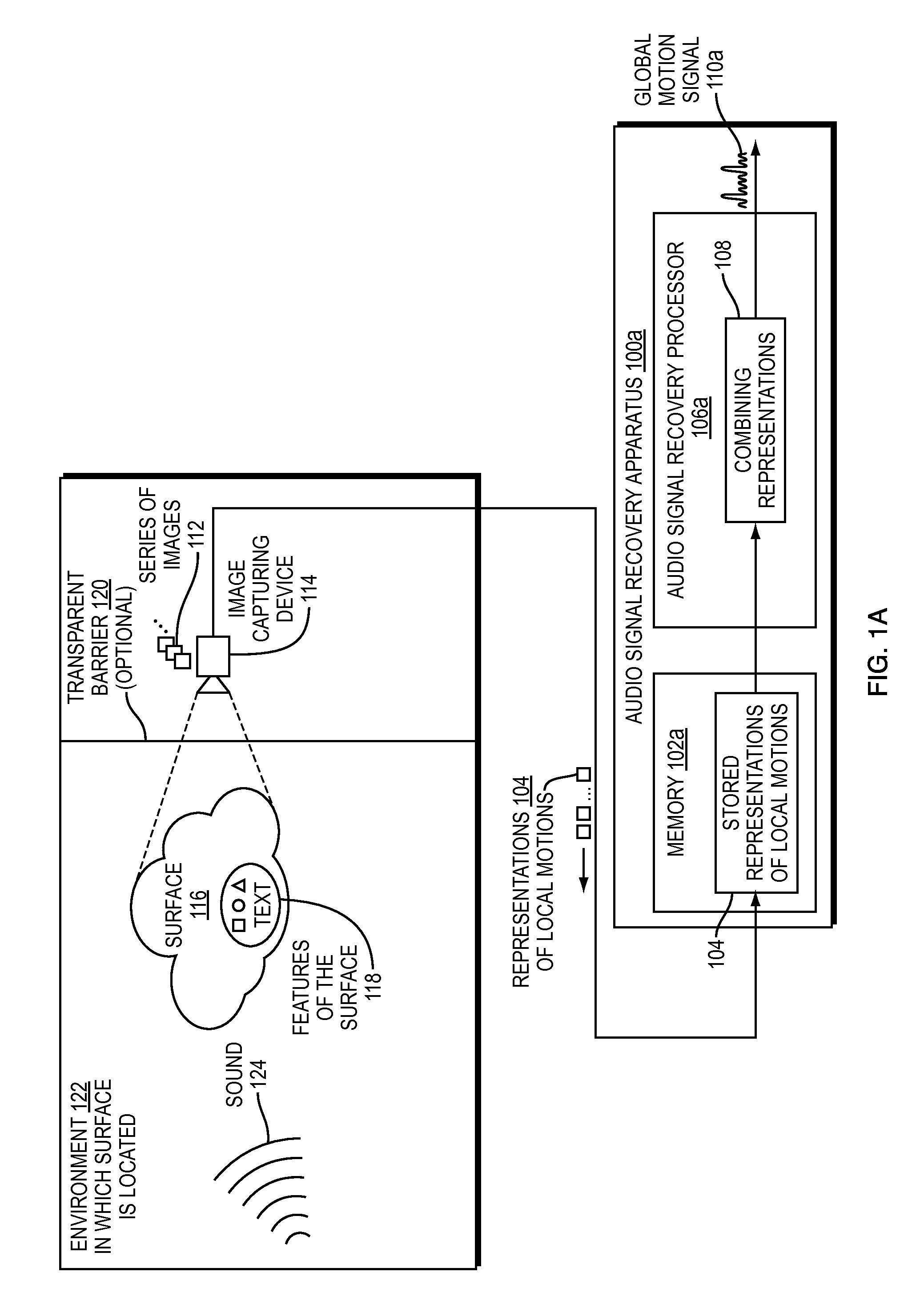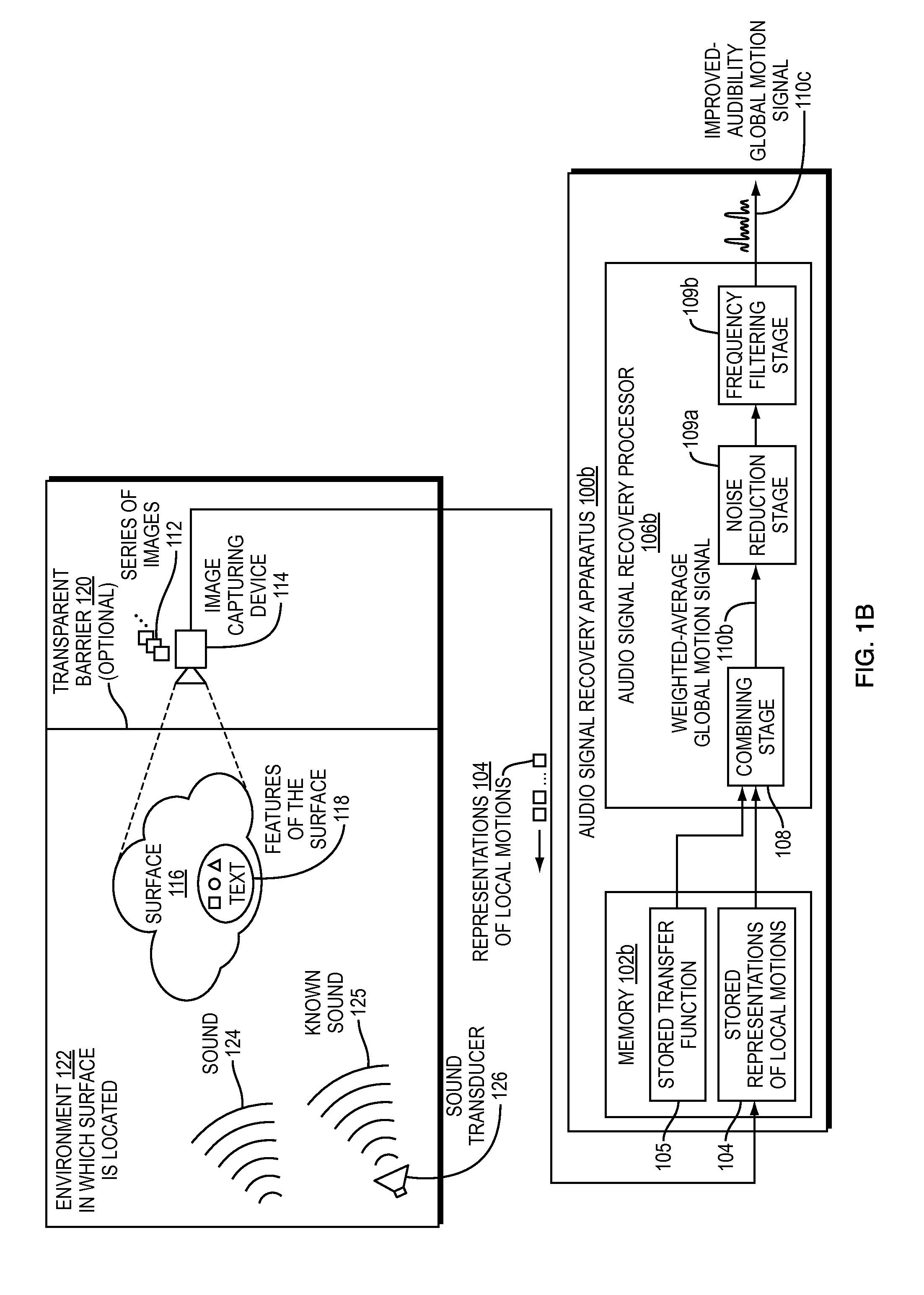Method and Apparatus for Recovering Audio Signals from Images
a technology for audio signals and audio, applied in the direction of instruments, electrical transducers, using wave/particle radiation means, etc., can solve the problem that laser microphones can recover audio, and achieve the effect of removing nois
- Summary
- Abstract
- Description
- Claims
- Application Information
AI Technical Summary
Benefits of technology
Problems solved by technology
Method used
Image
Examples
Embodiment Construction
[0038]A description of example embodiments of the invention follows.
[0039]Sound waves are fluctuations in pressure that travel through a medium. When sound waves hit an object, they cause the surface of that object to move with small vibrations or motions. Depending on various conditions, the surface may move with the surrounding medium or deform according to its vibration modes. In both cases, the pattern of motion contains useful information that can be used to recover sound or visualize vibration phases of the surface. Vibrations in objects due to sound have been used in recent years for remote sound acquisition, which has important applications in surveillance and security, such as eavesdropping on a conversation from afar. However, existing approaches to acquire sound from surface vibrations at a distance are active in nature, requiring a laser beam or pattern to be projected onto the vibrating surface.
[0040]Herein are disclosed methods and apparatus that, using only high-speed...
PUM
 Login to View More
Login to View More Abstract
Description
Claims
Application Information
 Login to View More
Login to View More - R&D
- Intellectual Property
- Life Sciences
- Materials
- Tech Scout
- Unparalleled Data Quality
- Higher Quality Content
- 60% Fewer Hallucinations
Browse by: Latest US Patents, China's latest patents, Technical Efficacy Thesaurus, Application Domain, Technology Topic, Popular Technical Reports.
© 2025 PatSnap. All rights reserved.Legal|Privacy policy|Modern Slavery Act Transparency Statement|Sitemap|About US| Contact US: help@patsnap.com



